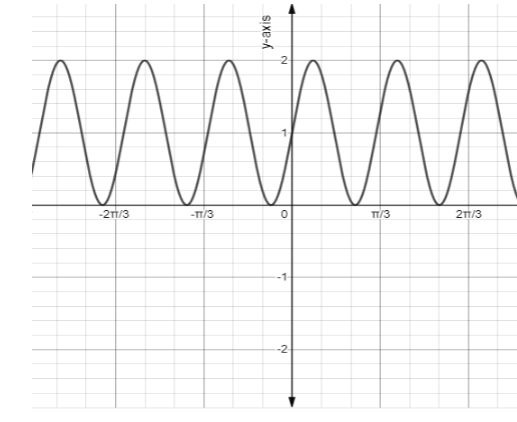
Explain how to graph sinusoidal functions.
Answer
451.8k+ views
1 likes
Hint: A sinusoidal function is a function which consists of a smooth and repetitive oscillation. It comes from “sine”, as the sine function is also a smooth and repetitive oscillation. There are many everyday things which can be represented by this function. For example, a vibrating guitar string, a bouncing spring, swinging pendulum etc.
Complete step-by-step answer:
To graph sinusoidal functions there is a standard form i.e,
Where, A, B, C, D are constants and if these constants are specified then we can draw an accurate graph easily.
From the equation
From the equation,
The distance between the two successive maxima and the two successive minima is termed as the period B. Therefore, the distance between the maxima and the minima is
Now, plot the point
Between the point

Note: On the domain
Complete step-by-step answer:
To graph sinusoidal functions there is a standard form i.e,
Where, A, B, C, D are constants and if these constants are specified then we can draw an accurate graph easily.
From the equation
From the equation,
The distance between the two successive maxima and the two successive minima is termed as the period B. Therefore, the distance between the maxima and the minima is
Now, plot the point
Between the point

Note: On the domain
Recently Updated Pages
Master Class 11 Economics: Engaging Questions & Answers for Success

Master Class 11 Business Studies: Engaging Questions & Answers for Success

Master Class 11 Accountancy: Engaging Questions & Answers for Success

Master Class 11 English: Engaging Questions & Answers for Success

Master Class 11 Computer Science: Engaging Questions & Answers for Success

Master Class 11 Maths: Engaging Questions & Answers for Success

Trending doubts
State and prove Bernoullis theorem class 11 physics CBSE

1 ton equals to A 100 kg B 1000 kg C 10 kg D 10000 class 11 physics CBSE

State the laws of reflection of light

One Metric ton is equal to kg A 10000 B 1000 C 100 class 11 physics CBSE

1 Quintal is equal to a 110 kg b 10 kg c 100kg d 1000 class 11 physics CBSE

Difference Between Prokaryotic Cells and Eukaryotic Cells




